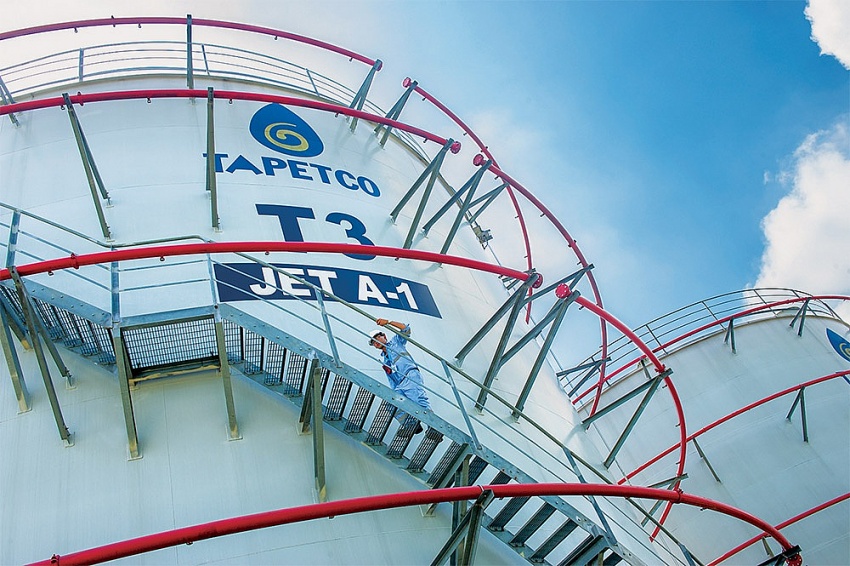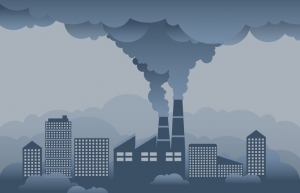First-movers to capture biofuel returns
The path to decarbonisation is constrained by harder-to-abate sectors, such as trucking, shipping, and aviation. Transport contributes more than a third of CO2 emissions from end-use sectors, according to the International Energy Agency, and these sectors are not reducing emissions at the rate needed to achieve global decarbonisation goals.
 |
| Biofuels are a viable energy source for big emitters like aviation, trucking, and deep-sea shipping, Photo: Le Toan |
If “business as usual” continues, emissions in these sectors are projected to rise, or even double. To get on track with climate goals, the transport industry needs a dramatically new energy mix–with biofuels taking up a larger share.
Biofuels are derived from biological materials, such as crops and agricultural waste. The process of capturing CO2 from biofuels is more cost-effective than other carbon capture options. And, in liquid form, biofuels can be used in existing engines with minimal modification.
Combined, that makes biofuels a viable energy source for aviation, heavy-duty trucking, and deep-sea shipping, which are all heavy-hitting emitters that otherwise have only nascent or unproven paths to decarbonisation.
Government policies and climate commitments are both fuelling demand. In Europe and the US, transport companies have been mandated to shift towards renewable energy sources, and tax credits and other incentives are spurring progress. In the private sector, climate commitments in industries from aviation to mining are also driving demand.
All told, global demand for biofuels is expected to grow 3-5 per cent per annum through 2050, with sustainable aviation fuel (SAF) and hydro-treated vegetable oil (HVO) projected to see the largest growth.
In 2022, global SAF production was between 300 million and 450 million litres – enough to cover 0.1-0.15 per cent of total jet fuel demand. By 2050, the International Air Transport Association estimates that up to 450 billion litres of SAF will be needed to keep up with demand.
Even optimistic production scenarios show a sizable supply gap. Without transformative changes to technology and agricultural systems, there will not be enough biofuel supply to meet global demand in 2050. Even mature markets like the EU, Japan, and the US are likely to become net importers of feedstock and finished biofuel products.
In Southeast Asia, private companies have announced or committed over $3 billion in capital expenditures for SAF and HVO pipeline infrastructure projects in the coming years. They are also exploring cultivation and collection innovations to help unlock supply.
Increasing the production of first-generation (1G) biofuels faces several uphill battles, including the ethical dilemma of diverting farmland and crops away from the world’s food supply. These 1G fuels are suboptimal for aviation, and they have significantly lower carbon abatement potential compared to second-generation (2G) crops.
The future of biofuels will include a mix of 1G and 2G fuels, with 2G taking an increasing role. And this is where Southeast Asia’s natural advantage unfolds.
Southeast Asia is the world’s largest producer of SAF and HVO feedstocks, generating about 35 per cent of global supply. Southeast Asia also has the world’s largest feedstock supply for 2G biofuels, such as palm oil mill effluent and palm fatty acid distillate. These are produced with by-products or wastewater from palm oil production – an industry Southeast Asia easily owns. About 85 per cent of the world’s palm oil supply comes from Indonesia and Malaysia.
In addition, Thailand and Vietnam are leading producers of sugarcane, which can be turned into ethanol. The region also has an abundance of used cooking oil. With better collection methods, Southeast Asia could increase its supply of biofuel from used cooking oil.
And with the right support, Southeast Asia could become a global leader in biodiesel production and exports. Southeast Asia could become the top HVO and renewable diesel producer by 2030, and it could claim a leadership position in global SAF production by 2050.
Regulation and competition
Few Southeast Asian countries have policies to encourage consumption or production, even for the most promising biofuels. Singapore aspires to become the frontrunner and to build a SAF hub, but it lacks formal policies to stimulate the market.
In contrast, other governments have used regulation and incentives to encourage demand. In the EU, the Renewable Energy Directive established a minimum threshold for renewable energy consumption. By 2030, 14 per cent of energy consumed in road and rail transport in the EU must come from renewable energy. And the US expanded tax credits and introduced grants to drive demand for lower-carbon fuels.
In Southeast Asia, private companies are making progress towards biofuels, even without government incentives. Singapore Airlines, Cebu Pacific, and Garuda Indonesia have all trialled SAF in flights. In shipping, Pacific International Lines and PSA Singapore tested a blend of biofuels on the Singapore Qinzhou Shuttle.
Neste, which has a large-scale biorefinery in Singapore, stands out as a regional and global leader in the biofuel market. In addition to increasing capacity and building up commercial capabilities, it invested heavily in feedstock production (its core business) through partnerships, mergers and acquisitions, and research and development. Through a series of acquisitions and investments, Neste has created a comprehensive, global sourcing platform for biofuels.
Companies that remove bottlenecks along the supply chain will be able to capitalise on the region’s natural advantages and capture outsized returns. There are winning opportunities for every role in the biofuel value chain in Southeast Asia.
Upstream suppliers can leverage their unique access to feedstock to maximise supply. For example, farmers and agriculture companies can find ways to optimise their land yields and crop production. Waste management firms can streamline or consolidate collection.
Midstream producers can build new facilities, partner with refiners that are closer to feedstock sources, or retrofit existing refineries. They need to create reliable and affordable access to feedstock and increase their export capacity.
Traders can secure contracts and offtake agreements with suppliers and key customers to steady supply and demand. They can encourage loan origination with financing agreements for farmers, and they can support education and programming to reduce carbon intensity.
Downstream users can secure the volume they will need in the future through long-term agreements with upstream and midstream players. They can also de-risk by securing multiple sources for biofuels and investing in biofuel development and refineries.
Southeast Asia’s feedstock market is severely fragmented, especially when it comes to collection. To bring winning strategies to life, organisations across the entire value chain need to consider partnerships. Companies may need joint ventures or partnerships to access feedstock, secure offtake strategies, innovate, and gain scale.
Refinery assets
Refineries in Southeast Asia are likely to face utilisation pressure as demand for conventional oil slows after 2030. Given the gaps in global biofuel supply versus demand, retrofitting current assets seems like a target opportunity when technology and regulations allow for it. Conversion can also be more cost-effective for producers than establishing greenfield biofuel plants.
To make the conversion, refineries need to consider four key elements: compatibility, compliance, feedstock supply, and the business case.
For compatibility, refiners need to determine what infrastructure modifications are necessary, keeping in mind that each conversion process requires different feedstock, equipment, and operational conditions. Distribution infrastructure, such as storage and transportation, should be evaluated as well.
In terms of compliance, biofuel production is held to different regulatory standards than traditional fuel production, and criteria may vary by region. For example, the EU has a minimum greenhouse gas emission-savings threshold, caps on crop-based biofuels, and restrictions on the types of land that can be used for feedstock production.
Next, refiners need easy access to feedstock materials, plus space, logistics, and infrastructure for storage. Supply is one area where refiners may need to lean on partnerships or long-term offtake agreements to ensure retrofitting plans are viable.
Finally, demand for biofuels is likely to grow substantially, but that does not mean the opportunity is risk-free. Refiners need to carefully weigh the risks and the rewards, as well as the environmental impacts of retrofitting. Refiners that operate in Southeast Asia can transform themselves into sustainable, future-proof businesses if they meaningfully reduce emissions when they retrofit.
When biofuel demand takes off, refiners can turn stranded assets into growth engines. For the greatest returns, they need to build the right infrastructure, partners, and capabilities now.
 | Carbon capture must quadruple by 2050 to meet climate targets: report By 2050, humanity must durably remove four times as much CO2 from the air as today to cap global warming below the crucial target of two degrees Celsius, researchers said Tuesday. |
What the stars mean:
★ Poor ★ ★ Promising ★★★ Good ★★★★ Very good ★★★★★ Exceptional
Related Contents
Latest News
More News
- CME Solar strengthens position in Vietnamese renewables (December 30, 2025 | 11:21)
- Self-care signals shift towards sustainable healthcare (December 30, 2025 | 10:12)
- GreenYellow marks five years of clean energy growth in Vietnam (December 26, 2025 | 15:51)
- TCP Group partner with VNUS to launch water conservation project (December 25, 2025 | 14:00)
- Heavy industries set for pilot greenhouse gas quotas (December 25, 2025 | 10:00)
- Swedfund invests in MSME growth and climate action in Vietnam (December 19, 2025 | 11:42)
- GreenYellow brings solar energy to light up remote schools in Tuyen Quang province (December 19, 2025 | 08:00)
- Charge+, Grab partner to develop EV charging network in Vietnam (December 18, 2025 | 17:11)
- Linking sci-tech and innovation to Vietnam’s net-zero future (December 18, 2025 | 14:31)
- Driving double-digit growth through green and circular transformation in Vietnam (December 17, 2025 | 09:00)

 Tag:
Tag:




















 Mobile Version
Mobile Version